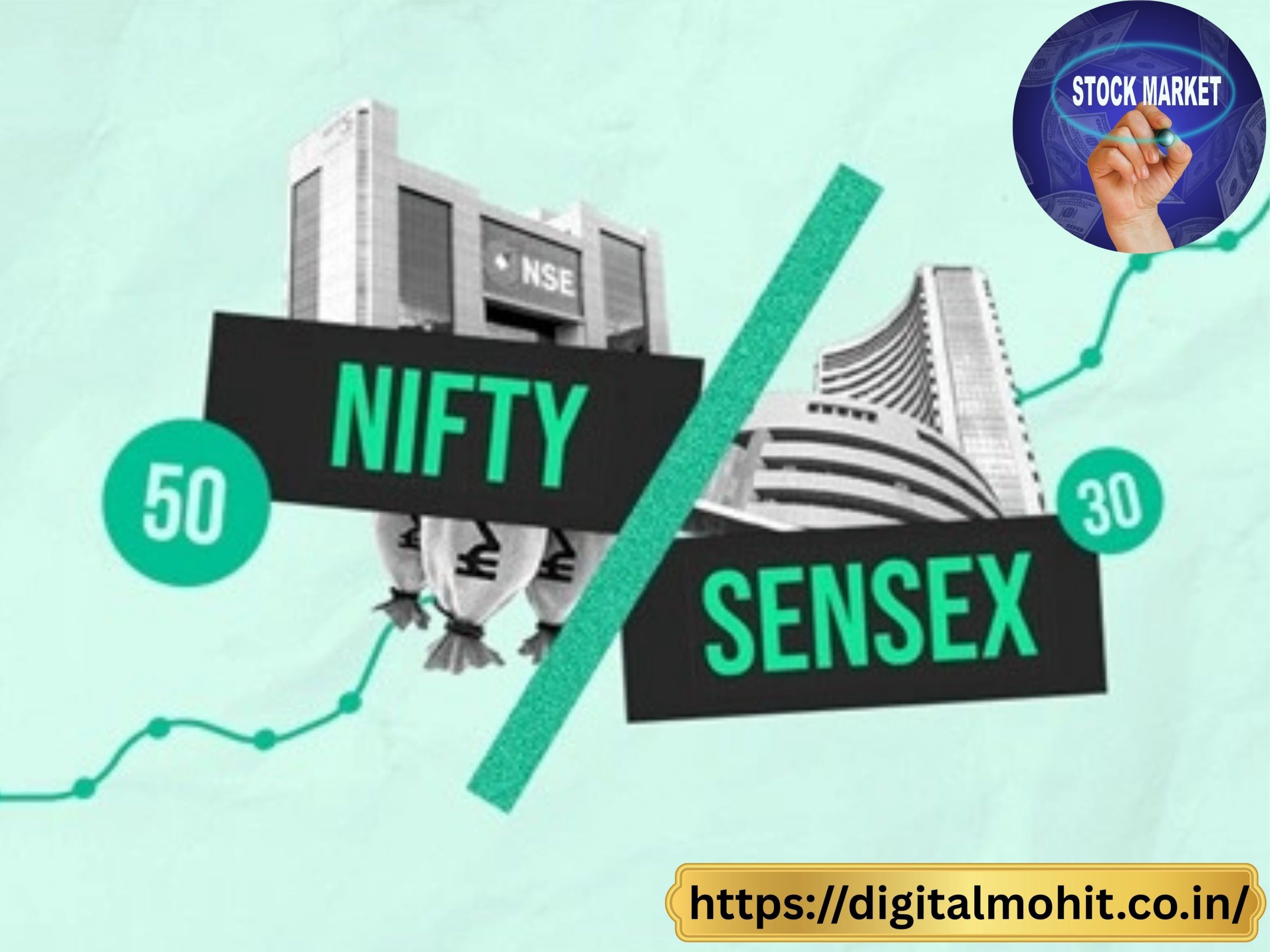The world of stock markets can often feel intimidating—full of jargon, numbers, and graphs that seem to move without explanation. But the Indian stock market, led by Sensex and Nifty, is not as complicated as it looks. Let’s take a walk through this financial landscape in a way that feels more like a conversation than a textbook.
LEARN MORE : https://digitalmohit.co.in/
What Exactly Is the Stock Market?
Imagine a bustling marketplace where people don’t trade fruits or clothes, but tiny ownership shares of companies. This is what the stock market is—a platform where individuals and institutions buy and sell parts of companies. When you buy a share, you’re essentially saying, “I believe in this company’s future and I want to be part of its journey.”
In India, the two main stock exchanges where this trading happens are:
- BSE (Bombay Stock Exchange) – Asia’s oldest stock exchange.
- NSE (National Stock Exchange) – India’s largest exchange in terms of trading volume.
LEARN MORE : https://digitalmohit.co.in/category/news/
INSTAGRAM REEL :
Sensex and Nifty: The Market’s Pulse
If the Indian stock market were a living being, Sensex and Nifty would be its heartbeat. They tell us how healthy or stressed the market is on any given day.
- Sensex (Sensitive Index): A benchmark index of the BSE, it tracks the performance of the top 30 companies across key sectors. Think of it as a report card of India’s corporate giants.
- Nifty 50: The flagship index of the NSE, it follows the top 50 companies listed on the exchange. It gives a broader view of the market since it covers more companies than Sensex.
When people say, “The market is up today,” they’re usually talking about whether the Sensex or Nifty has risen.
LEARN MORE : https://www.instagram.com/p/DNfooQcyhEI/
INSTAGRAM REEL : https://www.instagram.com/p/DNfrMIhTr6E/
Why Do They Matter?
You can think of Sensex and Nifty as the mood meters of India’s economy. When they go up:
- It usually means investors are confident.
- Companies are performing well.
- The economy is showing strength.
When they go down:
- Investors are cautious or worried.
- There might be economic uncertainty.
- Global events (like oil prices, wars, or recessions) could be making an impact.
How Do They Move?
The indexes rise or fall based on the combined performance of the companies they represent. For example:
- If Infosys, Reliance, and HDFC all report strong earnings, Nifty and Sensex may climb.
- If major companies struggle, the indexes drop.
It’s like averaging the scores of students in a class: if the toppers do really well, the class average looks better.
Can Ordinary People Invest?
Absolutely! You don’t need to be a Wall Street wizard to start investing. Platforms like Zerodha, Groww, and Upstox have made it as easy as ordering food online.
Ways to invest:
- Directly in Stocks: Buy shares of companies listed in NSE/BSE.
- Mutual Funds & Index Funds: Great for beginners, as they pool money from many investors to invest in multiple companies.
- SIPs (Systematic Investment Plans): Small, regular investments that grow steadily over time.
Risks and Rewards
Like life, investing is a mix of ups and downs:
- Rewards: Long-term investors often see good returns, especially with India’s growing economy.
- Risks: Markets are unpredictable in the short term—news, global politics, or even a tweet can shake things up.
The golden rule? Never invest money you can’t afford to lose, and always think long term.
Final Thoughts
The Indian stock market, powered by Sensex and Nifty, is more than just numbers flashing on a screen. It reflects the hopes, fears, and confidence of millions of investors. By understanding these indexes, you get a front-row seat to India’s economic journey.
So the next time you hear, “Sensex hits a new high!”, you’ll know it’s not just news—it’s a sign that India’s corporate story is reaching new heights, and you could be part of that story too.
















Leave a Reply